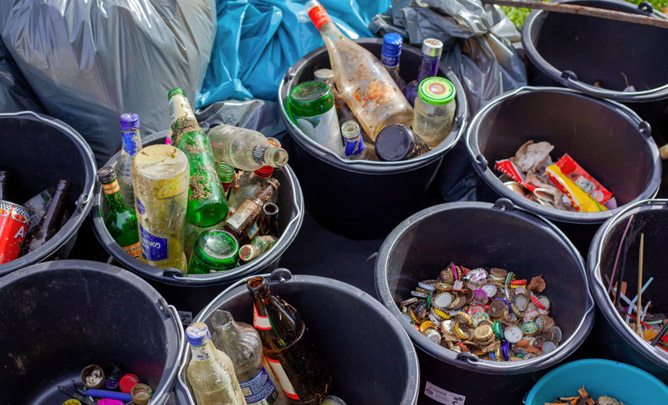COULD WE HAVE A NEW SOLUTION TO THE AUSTRALIAN
PLASTIC RECYCLING PROGRAM?

Of the 3.5 million tons of plastic thrown out each year in Australia, only 10% is recycled. The rest is either burnt, buried or shipped overseas.
The majority of waste shipped overseas went to China. However, in January 2018 China announced they would longer be accepting recyclable waste from Australia. Since then Australia has been struggling to deal with a growing waste crisis.
Australian scientists working at Licella may have the answer to this crisis. Dr Len Humphreys, Licella’s co-founder & chief executive officer and Thomas Maschmeyer, Sydney University professor have developed a technology that can recycle all plastics. They have been trialling this system for the past decade in a NSW central coast pilot plant and are now ready to take it to the market.
The Catalytic Hydrothermal Reactor (CAT-HTR) uses a form of chemical recycling that changes plastics and turns them back into oil. It does this at molecular level using hot water at a high pressure. From there the oil can be turned into bitumen, petrol or back into different types of plastic, meaning plastic products can be recycled again and again.
This technology differs from other plastic-oil technologies as it doesn’t require plastics to be separated according to type and colour, before being recycled. This is a huge advantage, as the sorting process is what makes many recycling schemes non-viable.
The first commercial recycling plant for this technology will be opened in the United Kingdom, with the hope of processing around 20,000 tons of plastic every year. The UK has been chosen over Australia, as the government promotes the recycling market by offering grants. According to Dr Humphreys, Australia is 5/6 years behind the European market.
The Australian Environment Minister Sussan Ley is currently in talks with Licella regarding their plans and how the Australian government can help. Currently, the government do not offer incentives and grants for the recycling industry. They do, however, offer support for the entire supply and investment chain in a way that will allow businesses to do what they do best.
Professor Damian Gurico, a director at the Institute for Sustainable Futures at the University of Technology of Sydney told 7.30 the following:
“When we think about how we need to design our systems for plastic use and reuse in the economy, one technology is not going to be enough.”
He believes this technology is impressive and could be one part of the solution. However, it would take dozens of recycling plants to make a substantial dent in the plastic problem within Australia.
The recycling industry in Australia has been widely described as in crisis.
A senate report last year stated that “Enormous quantities of recycled material, particularly materials collected through kerbside recycling, are now being stockpiled at a great risk to the health and safety of local communities. Moreover, quantities of otherwise recyclable material are being landfill.”
Although this new technology sounds impressive and could certainly play a part in the solution to the waste crisis, it seems the bigger problem to address is the over-consumption of plastic in Australia.
Bronwyn Reid | 4t Consultants
21 July, 2020
